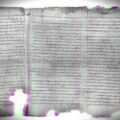Material scientists from the University of California, Santa Barbara (UCSB), have released a new roadmap for potentially expanding the wavelengths of single-photon emitters, which would enable the quantum internet of the future.
Previous efforts have explored improving the efficiency of single-photon emitters, which take advantage of material defects to produce individual photons, but those studies have indicated that the narrow wavelengths used by fiber optic data transmission may actually be the problem.
Now, the UCSB team says they may have found a pathway toward potentially expanding those wavelengths and increasing the emitter’s efficiency, leading to single photon emitters that could power a fully realized quantum internet.
Vibrations Limit the Effectiveness of Single-Photon Emitters
In the press release announcing the team’s research, the UCSB scientists note that photons are the best-known medium for communicating information over long distances. These quantum particles not only move at the speed of light, but a photon’s weak interactions with its environment dramatically improve data integrity over electric wires.


Still, optical data transmission only works in a narrow wavelength range—people in this field call it the “telecom wavelength band.” Unfortunately, creating single-photon emitters in these desired ranges has proven exceedingly difficult. According to the researchers, the culprit is the vibrations that occur in single-photon emitters, which can sap energy and corrupt the signal they are carrying.
“Atoms are constantly vibrating, and those vibrations can drain energy from a light emitter,” says UCSB materials professor Chris Van de Walle. “As a result, rather than emitting a photon, a defect might instead cause the atoms to vibrate, reducing the light-emission efficiency.”
To try to untangle the problem, Van de Walle’s group developed customized theoretical models to capture the role of atomic vibrations in the photon-emission process. They also studied the various defect properties in quantum materials capable of emitting single photons in desired quantum states to evaluate their energy efficiency.
Study Identifies Two Promising Approaches for Overcoming Low Efficiency
In the study’s analysis, published in the journal APL Photonics, the team says their work yielded a number of promising results. First, they found that single-photon emitters that would power a truly quantum internet are significantly more efficient at wavelengths outside of the telecom wavelength band. This finding supports their idea that one way to overcome the low efficiency of single-photon emitters may involve finding ways to expand the wavelength range of photonic transmission.
Second, the team found that different materials with different quantum defects operate differently and various wavelengths. Combined with managing the unwanted vibrations, this finding could lead to single-photon emitters that are more efficient at all ranges.
“Choosing the host material carefully and conducting atomic-level engineering of the vibrational properties are two promising ways to overcome low efficiency,” said Mark Turiansky, a postdoctoral researcher in the Van de Walle lab, a fellow at the NSF UC Santa Barbara Quantum Foundry, and the project’s lead researcher.
In their conclusion, the UCSB team’s research offered a completely different route to improve photon efficiency. Developed in conjunction with two other Quantum Foundry affiliates, computer engineering professor Galan Moody and Kamyar Parto, a graduate student in the Moody lab, this promising approach involves coupling the emitter to a photonic cavity.
While acknowledging that more work is needed to discover a single-photon emitter that can operate at better efficiency, the team says their study could provide a road map to a final solution. If successful, the materials scientists say they hope that their model and the insights it provides “will prove useful in designing novel quantum emitters that will power the quantum networks of the future.”
Christopher Plain is a Science Fiction and Fantasy novelist and Head Science Writer at The Debrief. Follow and connect with him on X, learn about his books at plainfiction.com, or email him directly at christopher@thedebrief.org.

